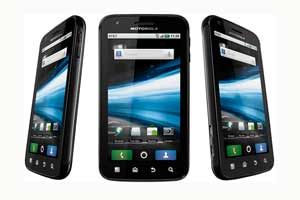If you ever thought all high-end smartphones are more or less equal, you had better remember this prophetic dictum all the time: some are always more equal than others. From among a sea of smartphones with similar capabilities, the annual Consumer Electronics Show (CES) in Las Vegas had something different to show: Motorola Atrix.
It looks like a phone, but it is so much more. It’s a phone, a laptop, a desktop and a high-definition multimedia player–all in one. Clearly, with smartphones moving far beyond mere communications, this could be the ultimate converged device, the most powerful smartphone ever. In fact, it’s different thanks to better hardware.
 A dual-core 1Ghz Nvidia Tegra 2 processor, 1GB RAM and HDMI output are par for the course for a “super” smartphone. Thanks to this kind of power, the phone could comfortably playback 1080p full HD video—something that many full-size computers struggle to do.
A dual-core 1Ghz Nvidia Tegra 2 processor, 1GB RAM and HDMI output are par for the course for a “super” smartphone. Thanks to this kind of power, the phone could comfortably playback 1080p full HD video—something that many full-size computers struggle to do.
And if that wasn’t enough, it also has a fingerprint sensor, a 4-inch , 540 x 960 pixel display, 720p video recording and a massive, 1930mAh battery, all in a device that is only 10mm thick and weighs 135 g. It can do all the things that a powerful smartphone can do: push email, GPS with maps, Wi-Fi tethering, social networking and multimedia.
And since it is powered by Google’s Android operating system, it also has the backing of over 2,00,000 applications in the Android App Market.
Of course, there were other devices with powerful hardware and large screens at CES. LG’s Optimus 2x, Sony Ericsson’s Arc and HTC’s Thunderbolt are notable examples. But the Atrix still had the edge. With an optional accessory called the HD Multimedia Dock, the Atrix becomes a Linux-powered Desktop computer.
The dock connects to any regular monitor and to any USB keyboard and mouse.
Or you could get the Laptop Dock, and turn the Atrix into a laptop with a 12-inch screen, full-size keyboard and 8-hour battery life.
In both cases, the phone outputs a MAC-style computing interface, complete with an application launcher and cursor support (web browsers, media player and document editors included). A bold leap and a sign of things to come? Possibly.


